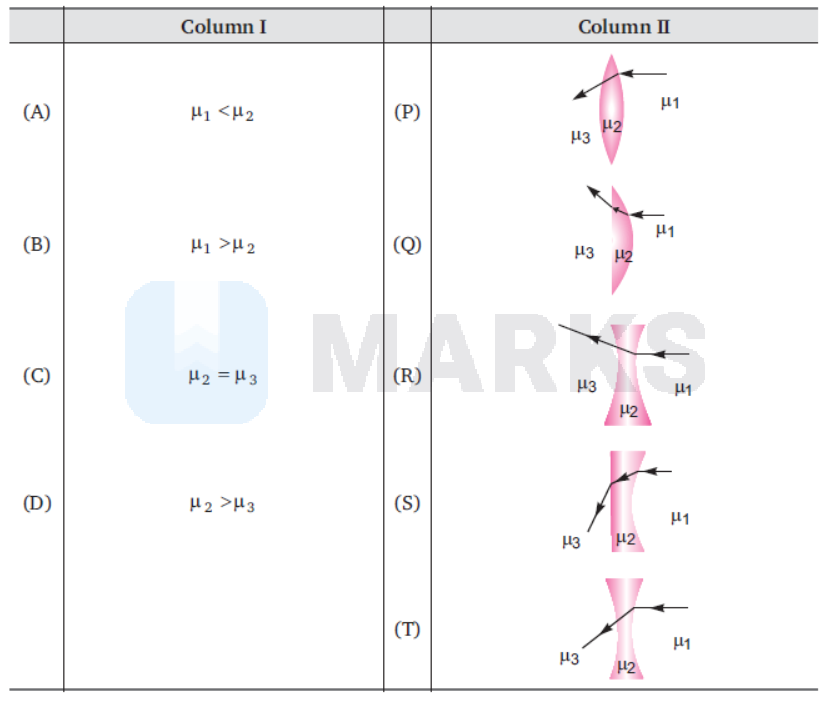Search any question & find its solution
Question:
Answered & Verified by Expert
Two transparent media of refractive indices $\mu_1$ and $\mu_3$ have a solid lens shaped transparent material of refractive index $\mu_2$ between them as shown in figures in Column II. A ray traversing these media is also shown in the figures. In Column I different relationships between $\mu_1, \mu_2$ and $\mu_3$ are given. Match them to the ray diagram shown in Column II.

Options:

Solution:
1932 Upvotes
Verified Answer
The correct answer is:
(A) P,R, (B) Q,S,T, (C) P,R,T, (D) Q,S
(A) P,R, (B) Q,S,T, (C) P,R,T, (D) Q,S
(A) $\rightarrow$ since $\mu_1 < \mu_2$, the ray of light will bend towards normal after first refraction.
(B) $\rightarrow \mu_1>\mu_2$, the ray of light will bend away from the normal after first refraction.
(C) $\rightarrow$ since $\mu_2=\mu_3$ means in second refraction there will be no change in the path of ray of light.
(D) $\rightarrow$ Since $\mu_2>\mu_3$, ray of light will bend away from the normal after second refraction.
Therefore the correct options are as under.
(A) $\rightarrow$ P, R
(B) $\rightarrow$ Q, S, T
(C) $\rightarrow$ P, R, T
(D) $\rightarrow$ Q, $S$
(B) $\rightarrow \mu_1>\mu_2$, the ray of light will bend away from the normal after first refraction.
(C) $\rightarrow$ since $\mu_2=\mu_3$ means in second refraction there will be no change in the path of ray of light.
(D) $\rightarrow$ Since $\mu_2>\mu_3$, ray of light will bend away from the normal after second refraction.
Therefore the correct options are as under.
(A) $\rightarrow$ P, R
(B) $\rightarrow$ Q, S, T
(C) $\rightarrow$ P, R, T
(D) $\rightarrow$ Q, $S$
Looking for more such questions to practice?
Download the MARKS App - The ultimate prep app for IIT JEE & NEET with chapter-wise PYQs, revision notes, formula sheets, custom tests & much more.